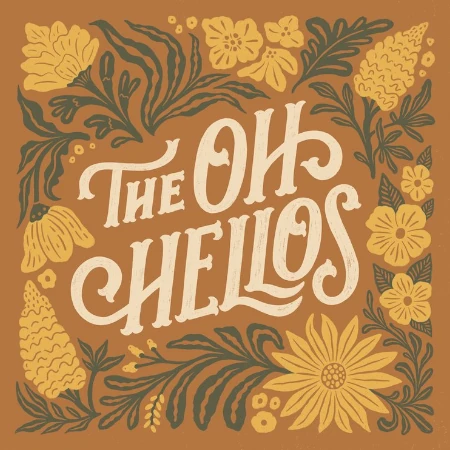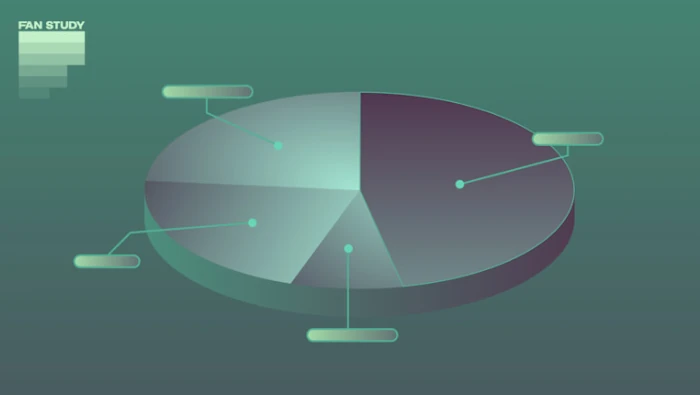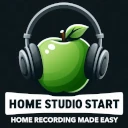Hey there, music maestros and aspiring stars! Are you ready to dive into the fascinating—and sometimes baffling—world of the music business? If you think making music is just about strumming a guitar or belting out a tune, think again! The truth is, behind every great indie artist lies a savvy business mind that knows the ropes of the biz. Today, we’re pulling back the curtain to reveal essential tips that can catapult your indie career from garage jamming to global streaming! Whether you’re crafting heartfelt ballads or high-energy bops, understanding the nitty-gritty of the music industry is crucial for your success. So, let’s embark on this thrilling journey together and turn your passion into a profitable venture! Ready to rock the music world? Let’s get started!
1. Understanding Music Licensing and Copyright
Diving into the world of music, it’s crucial to grasp the concepts of music licensing and copyright. These legal frameworks are the backbone of the music industry, ensuring that artists are rewarded for their creative work. For indie artists, understanding these concepts is not just helpful—it’s essential for safeguarding their creations and maximizing their revenue.
What is Copyright?
Copyright is a legal right that grants the creator of original work exclusive control over its use and distribution. In simpler terms, it means that if you write a song, you own the rights to it. This ownership allows you to decide who can use your music and how it can be used. For instance, if a filmmaker wants to use your song in a movie, they must obtain your permission, typically through a licensing agreement.
Types of Music Licenses
There are several types of music licenses that indie artists should be aware of:
- Synchronization License: This is needed when your music is used in conjunction with visual media, such as films, commercials, or video games.
- Mechanical License: This license is required when your music is reproduced in physical forms, like CDs or vinyl records, as well as digital downloads.
- Public Performance License: If your music is played in public venues—like bars, restaurants, or on the radio—this license ensures you get paid for that performance.
Practical Tips for Indie Artists
Here are some actionable tips to help you navigate music licensing:
- Register Your Music: Make sure to register your songs with a performance rights organization (PRO) such as ASCAP or BMI. This registration ensures you receive royalties when your music is played publicly.
- Educate Yourself: Familiarize yourself with licensing agreements and copyright laws. Online courses, webinars, or books on music law can be incredibly beneficial.
- Keep Records: Maintain detailed records of your works and any agreements you enter into. This will save you headaches down the road and help in case of disputes.
In conclusion, understanding music licensing and copyright is vital for indie artists looking to thrive in the music business. By taking these steps, you not only protect your work but also open up new revenue streams, allowing your artistry to flourish.
2. Building a Brand and Online Presence
In the ever-evolving landscape of the music industry, especially for indie artists, establishing a strong brand and online presence is vital. Think of your brand as the personality of your music—it’s what makes you unique and memorable. A well-crafted brand goes beyond just your music; it encompasses your visuals, your message, and the way you connect with your audience.
Understanding Your Brand
First and foremost, you need to define what your brand represents. Are you edgy and rebellious? Or perhaps soulful and introspective? Take a moment to jot down adjectives that describe your music and persona. For example, Billie Eilish has successfully branded herself as a moody, avant-garde artist, which is reflected in her music, visuals, and social media presence.
Creating Visual Elements

Next, visuals play a crucial role in branding. Your logo, album covers, and promotional materials should all convey a consistent message. Consider hiring a graphic designer or using tools like Canva to create eye-catching visuals. An indie band called The Oh Hellos is a great case study—they use vibrant, whimsical artwork that matches their folk sound and resonates well with their audience.
Leveraging Social Media
Now, let’s talk about online presence. Social media platforms are your best friends when it comes to building a brand. Choose platforms that suit your style; Instagram and TikTok are fantastic for visual content, while Twitter can be great for engaging in conversations. Consistency is key—post regularly and maintain a cohesive aesthetic. Remember to interact with your followers; respond to comments, and make them feel part of your journey.
Building a Website
Lastly, don’t underestimate the power of a dedicated website. A professional-looking site serves as your digital hub, showcasing your music, upcoming shows, and merchandise. Use platforms like Wix or Squarespace for user-friendly options. For instance, James Blake’s website effectively showcases his music, upcoming events, and even provides links to his social media, all in one place.
In summary, building a brand and online presence requires a thoughtful approach, but with the right tools and strategies, you can create a lasting impression that resonates with your audience and propels your music career forward!
3. Revenue Streams and Monetization Strategies
When diving into the world of indie music, understanding how to monetize your craft is crucial. It’s not just about creating beautiful tunes; it’s about making them work for you financially. Here are some key revenue streams and monetization strategies you should consider:
1. Streaming Platforms
Streaming services like Spotify, Apple Music, and Tidal have revolutionized how artists earn money. While it may seem like artists earn mere pennies per stream, these platforms can provide significant exposure. To maximize your revenue, consider:
- Playlist Placement: Aim to get your music on popular playlists. Reach out to playlist curators and leverage social media to promote your tracks.
- Release Strategy: Consistently release new music to keep listeners engaged and boost your chances of playlist inclusion.
2. Merchandise Sales
Your brand is more than just your music; it’s your entire persona. Merchandise can be a lucrative revenue stream. Here are some tips to make it work:
- Quality over Quantity: Invest in high-quality products that reflect your style. Items like t-shirts, hats, or limited-edition vinyl can attract fans.
- Online Storefront: Set up an online shop using platforms like Bandcamp or Shopify to make it easy for fans to purchase your merch.
3. Live Performances
Performing live is one of the most rewarding ways to connect with your audience and earn money. Here’s how to enhance your live performances:
- Gigging Strategy: Start small at local venues, and as your fanbase grows, aim for larger shows and festivals.
- Engagement: Interact with your audience during performances. Personal connections can lead to more merchandise sales and social media follows.
By diversifying your revenue streams and employing effective monetization strategies, you can create a sustainable income from your passion for music. Keep experimenting and adapting to find what resonates best with your audience!
4. Navigating Distribution and Streaming Platforms
When it comes to the business side of music, understanding how to navigate distribution and streaming platforms is crucial for indie artists. This is where your hard work can truly pay off, allowing your music to reach audiences around the globe. Let’s break it down!
Choosing the Right Distribution Service
First things first, you need to select a distribution service that aligns with your goals. Companies like DistroKid, TuneCore, and CD Baby are popular choices, each offering unique features. For instance, DistroKid allows you to keep 100% of your royalties for a flat annual fee, while TuneCore offers a pay-per-release model. Assess what works best for your budget and release strategy.
Understanding Streaming Platforms
Next, familiarize yourself with various streaming platforms. Spotify, Apple Music, and YouTube Music dominate the market, but don’t overlook niche platforms like Bandcamp or SoundCloud, which cater to specific audiences. Each platform has its own algorithms and audience preferences, so tailor your approach accordingly. For example, Spotify’s Discover Weekly playlist can be a game changer for exposure, so focus on getting your songs added to playlists.
Marketing Your Music Effectively
Once your music is distributed, it’s time to market it effectively. Utilize social media to share your releases, behind-the-scenes content, and engage with your fans. Collaborating with other artists or influencers can expand your reach significantly. For example, consider running a giveaway where followers can win exclusive merch by sharing your new single. This not only increases engagement but also drives streams.
Analyzing Your Data

Finally, take advantage of the analytics provided by these platforms. Spotify for Artists and Apple Music for Artists offer insights into who is listening to your music and where they are located. Use this data to inform your marketing strategies and tailor future releases. If you notice a significant following in a specific region, consider planning a tour or an online concert targeted to that audience.
By navigating distribution and streaming platforms effectively, indie artists can maximize their reach and revenue potential, making significant strides in their music careers!
5. Effective Networking and Building Industry Relationships
In the music industry, talent alone won’t take you far. Just like in any business, effective networking and building solid relationships can be the key to opening doors and creating opportunities. This is particularly true for indie artists, who often lack the resources of major labels. But don’t worry! With the right approach, you can cultivate valuable connections that will help you navigate the music landscape.
Start with Your Local Scene
One of the best places to begin your networking journey is within your local music community. Attend open mics, local gigs, and music festivals. Engage with other musicians, sound engineers, and venue owners. For instance, if you meet a fellow artist at an open mic, collaborate on a song or perform together. This not only builds camaraderie but also expands your reach to their fanbase.
Use Social Media Wisely
Social media platforms like Instagram, Twitter, and LinkedIn can be powerful tools for building relationships. Follow industry professionals, engage with their content, and don’t hesitate to send a friendly message. For example, if a producer you admire posts about their latest work, comment with genuine appreciation and share how their music has influenced you. This could open up a conversation and potentially lead to a collaboration.
Join Music Industry Groups and Associations
Consider joining local or online music industry groups. Organizations like the American Association of Independent Music (A2IM) or ASCAP offer networking opportunities, workshops, and resources that can help you connect with like-minded individuals. Attend conferences, panels, and workshops to meet industry professionals and learn the ropes of the business side of music.
Follow Up and Stay in Touch
Once you’ve made connections, it’s essential to follow up. Send a thank-you email or a message to anyone who has helped you along the way. You can share updates about your music, ask for advice, or simply check in. For example, after meeting a venue owner, send them a note expressing your gratitude and mention any upcoming shows you have. This keeps you on their radar and shows that you value the relationship.
In conclusion, networking is a vital component of the music business. By engaging with your local scene, leveraging social media, joining industry groups, and maintaining relationships, you can create a network that supports and elevates your indie music career.
Conclusion: Embrace Your Music Business Journey!
The journey of an indie artist is not just about creating incredible music; it’s equally about mastering the business side of things. We’ve explored crucial elements, including the importance of building a brand, understanding your target audience, and leveraging digital platforms effectively. Remember, every successful indie artist started where you are, and with dedication and the right strategies, you can turn your passion into a sustainable career.
Recap of Key Takeaways
- Branding: Crafting a unique identity that reflects your music style will set you apart in a crowded marketplace.
- Audience Engagement: Building a loyal fan base through social media and live performances is essential for growth and longevity.
- Financial Management: Keeping track of income and expenses ensures that you make informed decisions and remain profitable.
- Utilizing Digital Tools: Platforms like Spotify, Bandcamp, and social media are powerful tools to reach and monetize your audience.
- Networking: Forming connections within the industry can lead to invaluable opportunities such as collaborations, gigs, and mentorship.
Take Action!
Now that you have the knowledge, it’s time to put it into action! Create a detailed plan that includes setting your branding goals, identifying your target audience, and outlining your digital strategy. Don’t forget to create a budget—track your earnings and expenses so you can grow your music business sustainably.
Get out there and make those connections! Whether it’s a local gig, an online collaboration, or a music festival, every opportunity counts. Remember, the music business is as much about relationships as it is about the tunes. Finally, stay informed about industry trends and adapt your strategies accordingly!
So, what are you waiting for? Dive into the business side of music, embrace the hustle, and watch your indie artist dreams come to life! Join forums, attend workshops, and engage in conversations with fellow musicians and industry professionals. Your next step could be the breakthrough you’ve been waiting for. Elevate your music career today!
Let’s get started—grab that notebook, jot down your goals, and take the first step toward you success!

